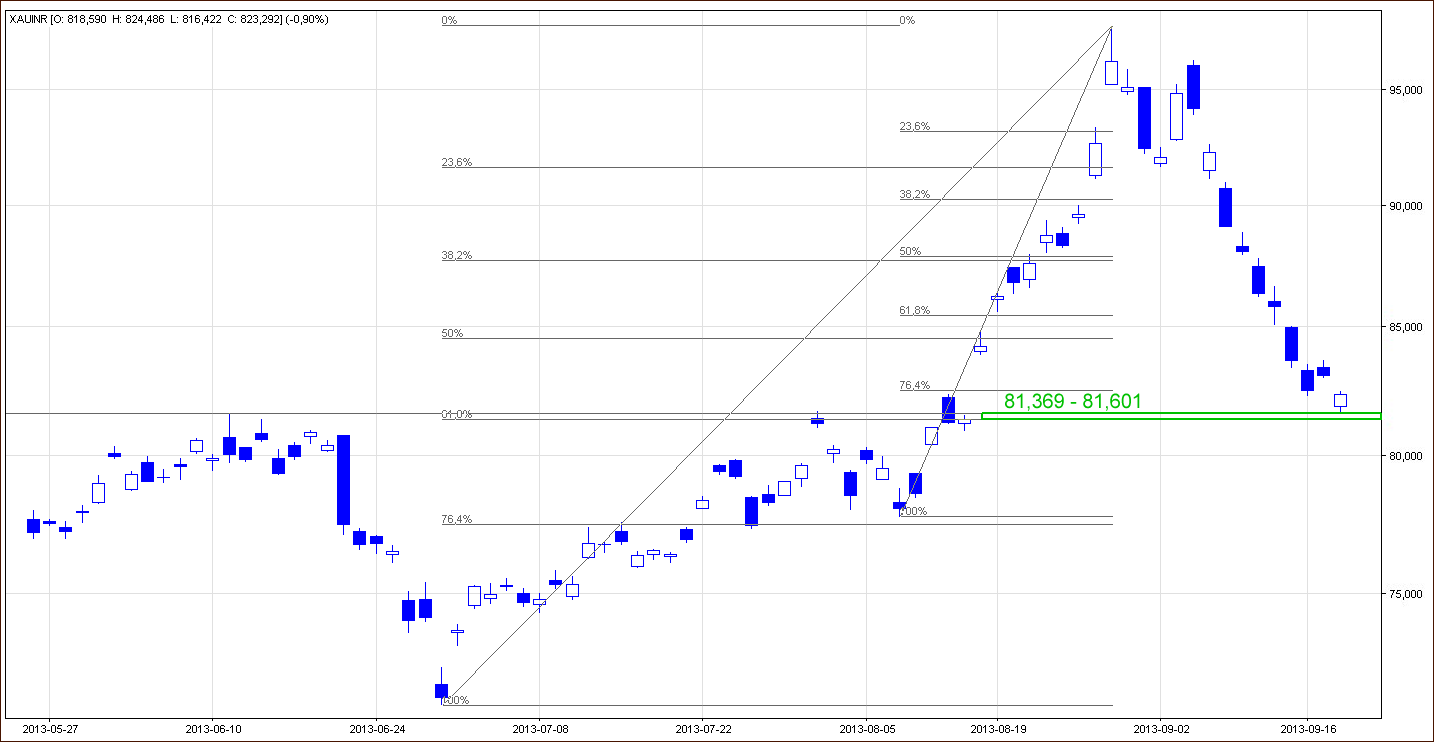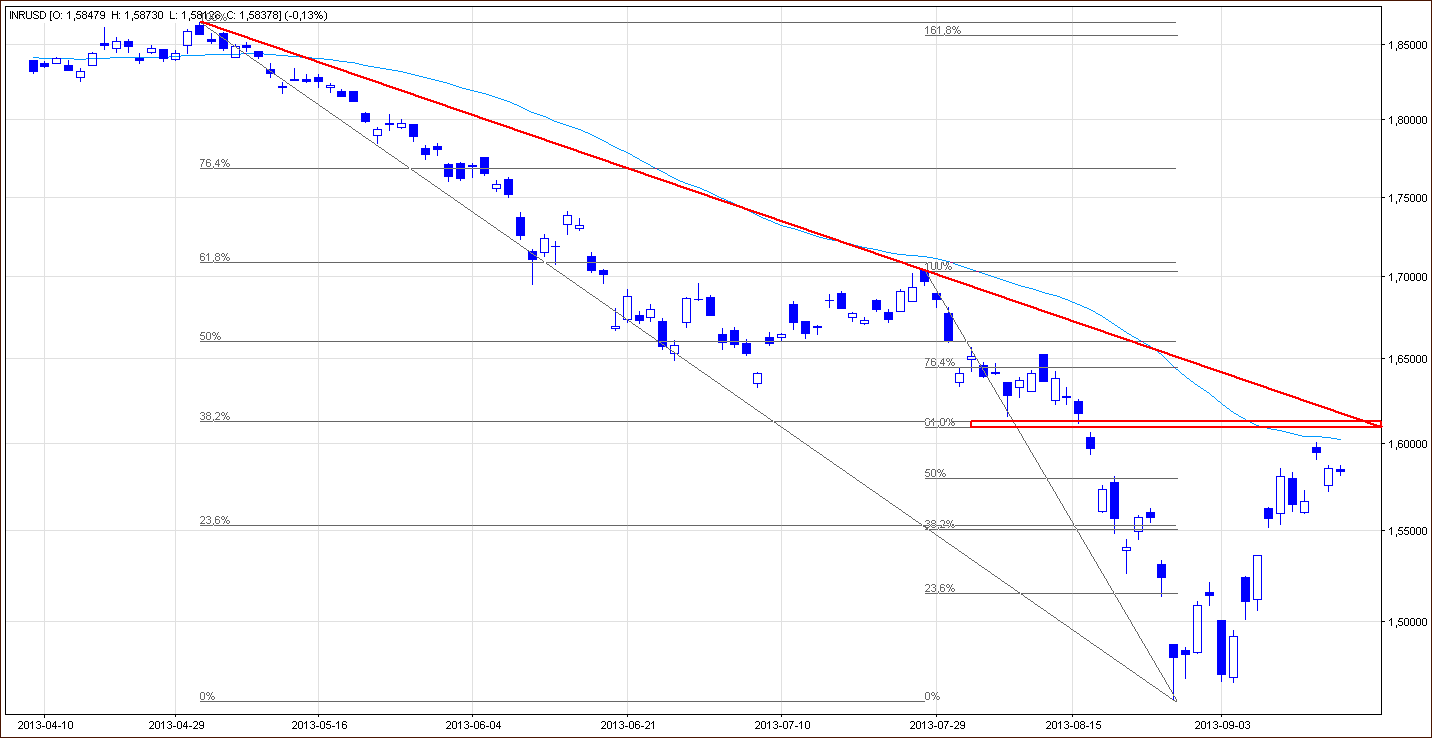Visit our archives for more gold articles.
Today, gold in the global market extended losses into a third session and dropped below $1,300 an ounce, with investors expecting the U.S. Federal Reserve to announce a reduction in its bullion-friendly stimulus measures.
According to Reuters, the Fed is expected to begin its long retreat from ultra-easy monetary policy by announcing a small reduction in its $85 billion monthly bond purchases. Most economists expect the U.S. central bank to announce a $10 billion reduction. The FOMC meeting statement will be released today afternoon followed by Fed Chairman Ben Bernanke's news conference.
Due to the volatility in prices, physical demand has failed to pick up rapidly in key consumers India and China. Expectations that prices could fall further once the Fed announces a cut in stimulus have also restrained purchases.
What impact did it have on gold in India? The yellow metal fell to its lowest level since mid-August and reached Rs 81,642 an ounce.
Speaking about the recent events, it’s worth mentioning that yesterday India increased the import duty on gold jewelry to 15% from 10% in a move to protect the domestic jewelry industry. The world's top gold consumer left the import duty on bullion unchanged at 10%. By keeping the import tax on jewelry higher than that of bullion, price-conscious consumers would be forced to buy those manufactured within India.
At this point, it’s worth noting that there have been no fresh supplies into India since July 22 when the Reserve Bank of India issued tough new rules tying imports to export volumes.
While the tax hike is part of India's efforts to curb gold imports, it is unlikely to have a significant impact since jewelry accounts for only a small portion (less than 10%) of the country's gold imports.
And what has happened in the recent days with the rupee?
After Monday’s increase to its highest level since mid-August, yesterday the Indian currency gave up the gains as investors preferred to take profits on their long rupee positions ahead of the U.S. Federal Reserve's two-day policy meeting outcome due to be released.
The outcome of the Fed's meeting will be a key determinant of what the Reserve Bank of India chooses to do at its monetary policy review on Friday.
Having discussed this interesting piece of data, let's take a closer look at the charts to find out what the current outlook for gold priced in rupees is.

The situation has deteriorated once again since my previous essay was published.
Quoting my previous essay on gold in India from September 13:
(…) the strong support zone is between Rs 81,369 and Rs 81,601, where the 61.8% Fibonacci retracement level based on the entire June-August rally intersects with the June top. Taking the above into account we see that there is still much room for further declines.
As we see on the above chart, gold bears didn’t give up in the recent days and reached the above mentioned price target today. If this strong support zone encourages buyers to act we will likely see a pullback in the following days. In this case, gold priced in rupees may come back to at least Rs 85,000. However, if the Fed's statement triggers another decline in gold in the global market we should prepare for lower values. Taking into account this negative scenario, the next strong support zone is around the August low at Rs 77,770. Slightly below there is also the 76.4% Fibonacci retracement level, which reinforces this area.
Once we know the current situation in gold priced in rupees, let’s take a look at the INR/USD chart and find out whether the relationship between gold and the INR/USD exchange rate still exists or not.

On the above chart we see that the situation has improved in the recent days. However, this improvement didn’t last long.
Quoting my previous essay on gold in India from September 13:
(...) a consolidation has formed in the recent days. (...) If the buyers do not give up and push the price above the Wednesday’s high, the INR/USD exchange rate will likely climb to at least the 61.8% Fibonacci retracement level. Please note that this area is also supported by the 38.2% Fibonacci retracement level based on the entire May-August decline.
Although, the buyers pushed the price higher the rupee didn’t reach the above mentioned price target. The combination of gold bulls weakness and the 160 level stopped the rally and the rupee against the dollar dropped to the consolidation range.
Summing up, taking all the above facts into account, the question is: has the recent drop in the rupee against the dollar had any positive impact on gold? Not really. Just as I indicated previously it seems that gold stopped responding to the rupee price moves. The Tuesday’s decline didn’t trigger an upward move in gold. In other words, the recent negative correlation didn’t work once again. From today’s point of view it’s hard to estimate whether this tendency changed. That’s why it is important to watch how gold reacts to price moves in the rupee against the dollar which we are likely to see in the not-too-distant future.
Today's Market Alert deals with the current peculiar situation on the precious metals market. Mining stocks have been performing quite well relative to gold in the past few days, the True Seasonal tendencies point to higher prices in the very short term, but the medium-term outlook seems down based on multiple factors including the confirmed breakdown in the HUI:gold ratio below the 2008 bottom and given waning link between gold and crude oil that I described in this week's Oil Update. If you'd like to read our thoughts on taking advantage of this situation, please sign up for our Premium Service and read access today's Market Alert.
Thank you.
Nadia Simmons
Back
